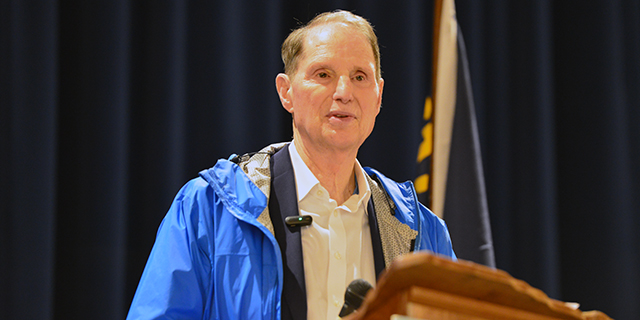Beavers baseball will wait for clarity before making roster decisions
Published 11:47 am Monday, April 20, 2020
CORVALLIS — When Mitch Canham was managing in the Seattle Mariners system, he and his assistant coaches spent a good deal of time “playing GM.” They would put themselves in the shoes of the general manager and try to predict the upcoming roster moves that would dictate their job that day.
With the college baseball season canceled and the future of the sport constantly shifting, Canham and his Oregon State team have adopted a wait-and-see approach until they find out what exactly the 2021 campaign will look like.
It has been over a month since the Pac-12 canceled all sports for the academic year and the Beavers’ season reached an abrupt end. Since then, plenty in the baseball world has changed, but OSU is still left awaiting answers to many questions as Canham plots the program’s future.
In March, the NCAA Division I Council granted all spring athletes an extra season of eligibility and eased the 35-player roster maximum — a move that was universally celebrated by the players it affects. The Council also left each college program to decide what it will do with its seniors; schools are still able to offer scholarships to seniors, but cannot offer more than what they offered a player in 2020.
Meanwhile, Major League Baseball reached an agreement with its players’ union that gives MLB the option of trimming its amateur player draft as short as five or 10 rounds this summer. The agreement did not include a date for the draft, which could be held anytime between June 10 and July 20. Regardless of when the draft takes place, the deadline for players to sign their pro contracts is August 1.
A five-round draft would ensure that less than 200 players get drafted — an 87.5 percent reduction from the typical 40-round draft. Players who aren’t drafted are still able to sign with pro clubs, but teams are allowed to spend a maximum of just $20,000 on the signing bonus of any one player.
In 2019, the bonus slot for the 162nd pick was $318,200. The 311th pick — the last of the 10th round — was slotted at $142,300.
So, some of the top college players in the country are now left to decide if they want to take a drastic pay cut to pursue their professional dreams, or go back to school and receive little financial support or, in some cases, pay their entire tuition out of pocket.
While an extra year of eligibility will empower players to take control of their futures, it will also leave many coaches with more players than they can possibly provide playing time for. Oregon State has not yet decided how it will handle the ensuing roster crunch.
“There’s still answers to be had,” Canham said. “We don’t know if there’s five or 10 rounds in the draft, which one that’s gonna be. That could affect some of our guys. We just need to get an understanding of how that works out with the seniors and what us and the university are going to be able to do as far as figuring out scholarships and everything. So we’re still waiting for those pieces to come together.”
Canham will have plenty to think about once more clarity is provided. Oregon State carried just three seniors on its 2020 rosters in Jake Mulholland, Preston Jones and Andy Armstrong. They also had 11 juniors, eight sophomores and 12 freshmen for a total of 34 players. In November, the Beavers announced a 10-player recruiting class, meaning 44 players could potentially be eligible to play next season.
One of those signees, Jesuit High School star Mick Able, is a consensus top-10 draft prospect and could potentially be the first high school player off the board this summer. But aside from him, Kevin Abel is the only player with Oregon State ties who is considered a top-100 prospect.
With an abbreviated draft in place, several Beavers who would have been sure-fire draft picks any other year could be forced to head back to school.
“Depending on what happens in the draft, we have a handful of guys that I believe are ready to go play at that next level and be very successful there. It’s just a matter of if everything lines up and they take off. Obviously, if they’re ready to go play at that level, if they wanna stay, you obviously want those guys around because they’re very talented.”
Until the NCAA provides more answers, Canham and the rest of the country’s baseball coaches will be in a holding pattern.
Many are hopeful that there will be a temporary increase to the 11.7 scholarships that teams are typically allocated to help deal with an unprecedented situation.
But even with additional scholarships, the dearth of draft-eligible players who don’t go pro will create a double-edged sword for coaches — there will be an uptick of talent at the college level, but scores of talented players won’t get the playing time they need.
“You don’t wanna carry a high number of guys and then have guys who aren’t getting reps,” Canham said. “If it’s a crowded situation, you’re not getting the work that you really want. So everybody is trying to find balance in it. But to jump the gun and start saying things and making moves before the draft happens, and before the university decides what they’re going to do with the seniors, and before the seniors decide what they’re interested in doing, you have to look at all those puzzle pieces first.”





